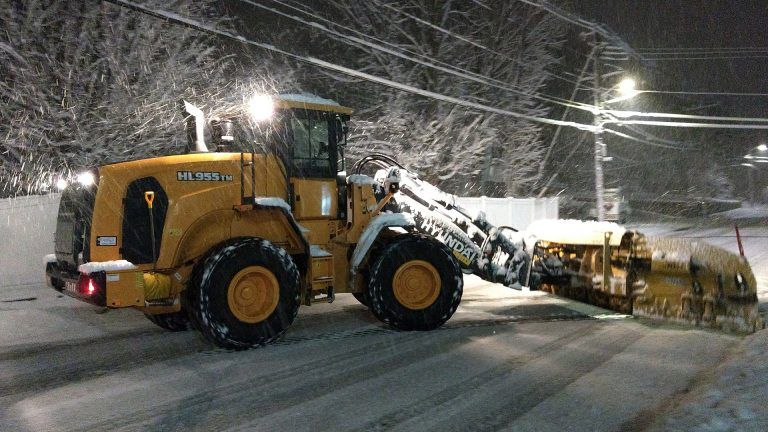
December 19, 2018 | Product Knowledge
As the winter months have approached, many contractors live in areas where freeze laws go in to effect and they see their business slow down. Whatever the situation may be, preparing snow removal equipment for cold starts in extremely cold temperatures will reduce wear on your components. Remember to check these items:
1. Batteries: If your construction equipment goes unused for a long period of time, you will need to properly store the battery away from frigid temperatures. Batteries can lose up to 35 percent of their power at 32°F and as much as 60 percent at 0°F. To prevent the battery from draining in the cold temperatures, you should test voltage before storing it inside.
2. Tires: Tire conditions should be checked frequently, especially before temperatures begin to drop. During the winter months, you should check the air pressure of your tires and look for signs of wear and tear. Tires tend to deflate quicker in colder temperatures, so check your air pressures daily.
3. Grease Points: Grease all grease points well, making sure to have a good build-up of grease for winter and don’t forget the axle hubs.
4. Fuel Additives: Using an anti-gelling additive in diesel fuel can improve your engine start-up in cold weather. This can also improve cold flow by preventing gelling and will even clean deposits from fuel injectors, combustion chambers, and intake valve deposits. These additives are fairly well known and can be found at any local dealership or service shop.Also make sure you change the fuel filters and fuel separator filters to be sure no moisture has been retained by the filters that might cause problems later on. Moisture in the engine can occur when the engine is hot and the outside temperatures are very cold. Moisture can form in the fuel when the equipment has been sitting for an extended period of time.
5. Engine, Oil, Coolant and Hydraulic Oil at Start: The oils in your construction equipment should be changed before and after the winter months. The temperature of your oil must match the temperatures outside for your equipment to work properly. To do this, don’t wait until the oil flows from the machine after it has been turned on; simply use a low viscosity oil that will flow with less resistance. This includes oils for the engine, transmission, differentials and hydraulic system. Most diesel engines today come with heating grids or glow plugs. A heating grid preheats air going into the internal combustion chamber, which heats up the engine to a suitable temperature for combustion. Otherwise, when cold fuel is sprayed into the chamber, it can gel and adhere to these parts. Hard starting and inefficient combustion can lead to damaged plugs and cylinder heads. Many diesel engines come equipped with built-in electric-powered block heaters to keep the engine block warm overnight. A diesel engine needs heat to ignite the fuel since there are no spark plugs. This heat comes from the compression of air in the cylinders. On start-up in cooler temperatures, the heat from compression needs a little help. The grids provide this by heating the intake air.
6. Cold Climate Engine Checks: When you live in colder climate areas you will also need to install oil pan heaters. The main purpose of an oil pan heater is to make it easier to start the engine, by preheating the engine oil. In cold climates, oil becomes very thick and difficult to pump, upon start-up, having warm oil instantly pumped to the critical wear points of the engine reduces wear and tear on engine components, improves emissions, and increases battery life.
Proud member of SIMA, Snow & Ice Managment Association.
